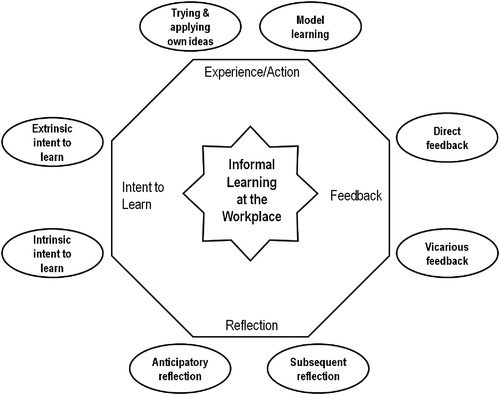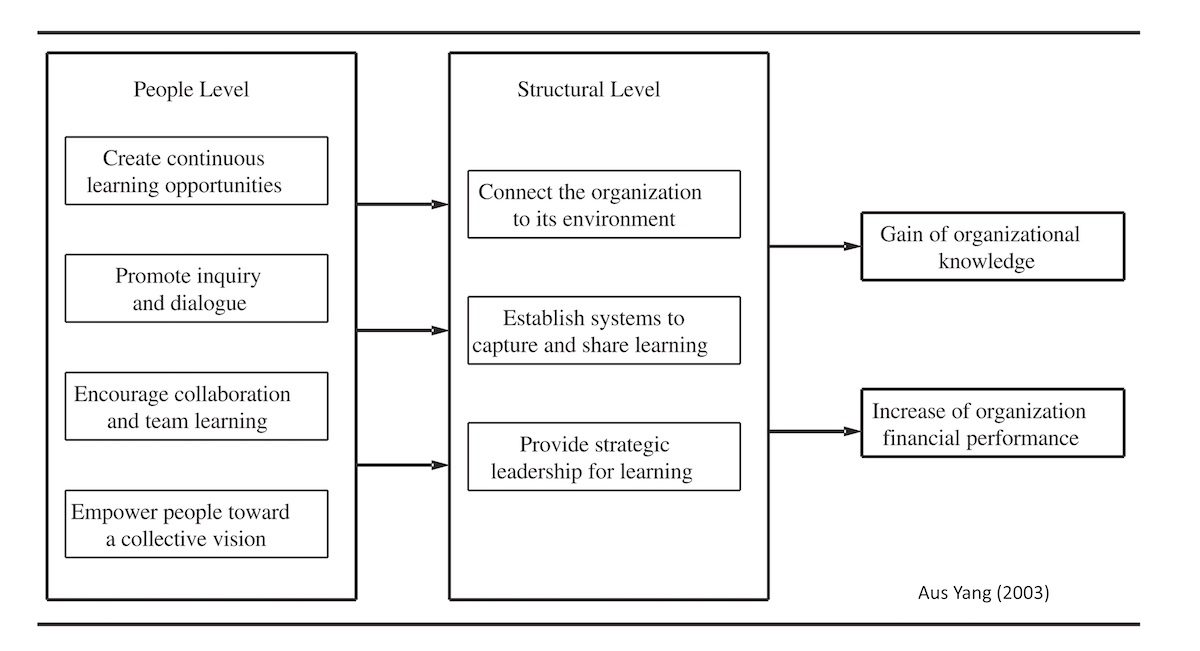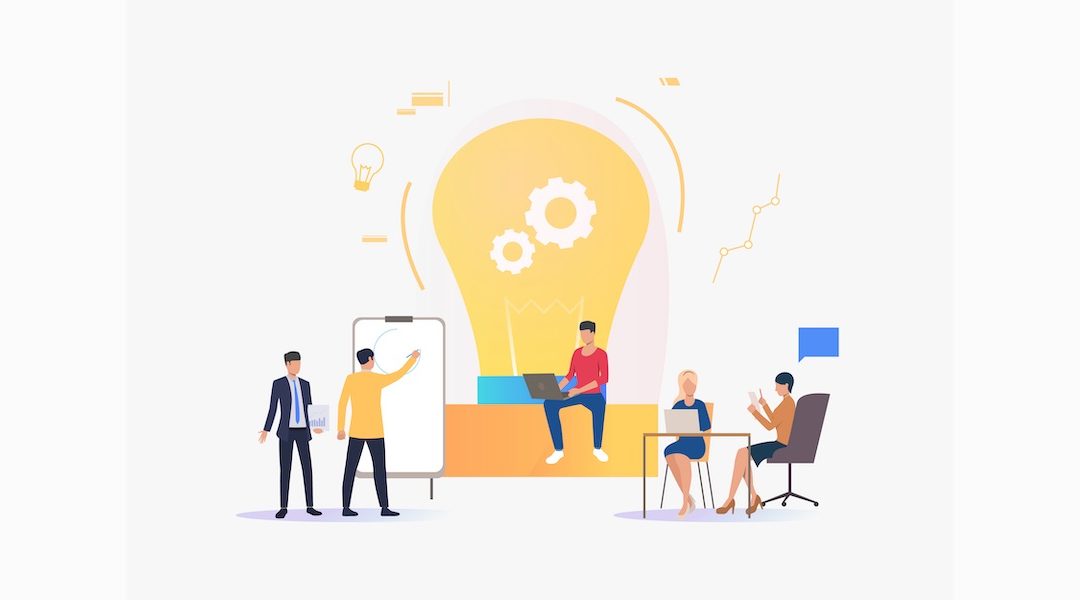The demands on employees can change quickly and permanently. For each of us, this means adapting and sometimes learning. Some tasks are eliminated through automation. In turn, new challenges arise to meet the demand for fast and high-quality work. In this context, the subject of learning takes on a whole new meaning. What will learning look like in the future? How can we acquire skills we don’t even know yet, but might need tomorrow?
We did our 35th New Work Meetup on this topic on Oct. 29th, 2020. More than 50 participants logged into the Zoom conference to get to the heart of the question “Why we should reinvent learning”. Expert input was provided primarily by the scientists Timo Kortsch and Julian Decius as well as the business psychologist Felicia Würtenberger, who, as a people & culture expert, gave us an insight into the learning mentality of the startup Kollex. In between, the participants were able to exchange ideas on the topics of learning and new work in break-out sessions.
New Learning in 6 Theses
In the meetup, Timo Kortsch and Julian Decius talk about their understanding of New Learning. The two have summarized the findings of their research in six theses. They have long been concerned with the question of how learning must be adapted to today’s conditions. In doing so, they also consider – and this is where it gets interesting for us – how the demands of New Work affect the way we learn.
These six theses can be food for thought for learners, teachers, and people from human resources who deal with learning and training. They should motivate to see learning as a daily companion and to integrate learning into working life. When these six theses are considered, New Learning can be realized. At the same time, the potential for a successful learning organization is significantly increased.
Thesis #1: The tools make the difference
Even in the past, there were times when we alternated between informal and formal learning. In the Middle Ages, for example, blacksmiths learned informally by copying, showing, practicing, and giving feedback, while the Industrial Revolution took a more efficient path. Here, standardized training emerged, which was simply consumed by learners without any kind of exchange. Today, there is a trend back to the informal. In many organizations, there are regular feedback rounds and people work together on one thing, such as in pair programming in software development. In the future, we can expect that the focus will continue to shift from informal to formal learning and back again.
What Julian and Timo mainly mean when they talk about tools are learning methods. Working Out Loud and microlearning are worth mentioning as example here. These different learning methods can create shared learning opportunities through an exchange.
Thesis #2: Learning is more the responsibility of the learners

Timo Kortsch is also cofounder of Denkverstärker
The world of work has changed. In the past, it was possible to complete an apprenticeship at a company and then work there until retirement. Today, the résumés of many people in their mid-thirties stretch over several pages in order to record all the stages that could be relevant for a future job.
This is also due to the fact that further development today does not only mean climbing the career ladder. Advancement also works horizontally and leads to many new skillsets beyond a well-worn development path. This is both an opportunity and a challenge because the existing learning opportunities (distributed by companies to their employees) do not necessarily cover the interests of the learners. New Work also means more self-determination and responsibility in the workplace. Learners want to be seen at eye level and should be agile in designing and co-determining their learning path. Thus, the responsibility of modern learning also lies more strongly with learners again.
Thesis #3: Learning must be viewed holistically
With regard to informal and formal learning, there is no better or worse or right or wrong. Both approaches have their advantages and disadvantages. Informal learning, for example, can be implemented quickly: I have a concrete problem, get information, seek advice, and try my hand. Directly and immediately. Sometimes what I learn is not the right thing, or I get lost in the flood of information while researching.
That’s where formal learning has advantages because it comes with a predetermined framework. The content is aligned with the learning objective. So I know specifically what I should be able to do at the end. Unfortunately, you can’t learn formally in advance, especially when you may not even be aware of what you need to learn tomorrow so that you can implement it the day after tomorrow. There is a constant conflict between learning and transfer to daily work: It is difficult to check beforehand whether something has been learned successfully unless it has been applied in everyday work. So we have to find the right mix of informal and formal learning.
Julian and Timo tell us about agile learning in the overall context of an organization. Here, the agile manifesto is adapted to learning and follows agile routines: A learning goal is defined for an organization, the product owner collects the requirements to achieve the learning goal, prioritizes them and communicates them with the learning team. This team formulates smaller learning objectives that can be implemented in short iterations. The learning team is supported by a Scrum Master who knows the concepts and methods for learning, advises and removes obstacles. In regular retrospectives, the entire team can then discuss how successful the learning went in the previous iteration, where they found weaknesses, and what can be done better or differently for the next iteration. This also makes learning agile, adapting to individual needs, business goals, and the professional environment.
Thesis #4: Learning must be learned

Julian Decius works at the Institute for Human Sciences, University of Paderborn
Short intermediate state: so we say we need more methods that offer an exchange with other people, regardless of whether they are thematically in the same boat with us or not. To this end, learners should be given more responsibility to develop strategies for their own holistic learning. This demands a lot from learners and can lead to overwhelm! One cause is our school education, in which we are primarily taught content, but rarely methods for acquiring knowledge efficiently.
The meta-competence “learning”, i.e. the ability to learn, is absolutely essential in a world where the half-life of knowledge is getting shorter and shorter. Therefore, this competence should be strengthened before entering professional life.
One appeal made by the speakers is to consider learning across all phases of life. Not only the content should count and be rewarded, but also the path that led to the result. Conversely, this means that our error culture must change. Students and later employees must not be afraid to try out new ways and methods. In addition, I need the ability to recognize learning situations: Where is an opportunity for me to learn something?
Thesis #5: Those who want to promote informal learning can also disrupt it
Informal learning is just as important as formal learning. But while formal learning can be planned and promoted, informal learning seems difficult to control from the outside. This is because informal learning requires learners to have their own needs to satisfy their curiosity. So how can informal learning be promoted without destroying it?
For this purpose, check out this model with 4 categories and 8 factors for successful informal learning:
Act of learning:
- Trying & applying own ideas
- Model learning
Feedback:
- Direct feedback
- Vicarious feedback (general experiential knowledge)
Reflection:
- Subsequent reflection
- Anticipatory reflection (where are potential pitfalls?)
Learning intention:
- intrinsic learning intention
- extrinsic learning intention
Intrinsic motivation towards learning is challenging and actually impossible to encourage. A detailed publication on informal learning in the workplace can be found here.

Octagon model of informal workplace learning, based on the dynamic model of informal learning by Tannenbaum et al. (2010)
Thesis #6: Learners need guard rails instead of directions
There are enough learning opportunities in the working world, they just have to be recognized and used. Therefore, it makes sense to rethink framework conditions and allow time for learning and reflection, as well as to promote a generally positive learning climate.
Guardrails for a learning path can be dictated by the company. They then provide some assurance that it is good to gain experience and make mistakes. Learning becomes a promoted goal. Julian and Timo present a model for this that is structured in two dimensions: the human dimension (People Level) and the organizational dimension (Structural Level). Basically, the guardrails are about fostering exchange, sharing experiences, and communicating the larger vision and goal direction to all employees. To do this, leaders should exemplify the culture of learning and also a culture of social exchange.

Source: Yang, Baiyin. “Identifying Valid and Reliable Measures for Dimensions of a Learning Culture.” Advances in Developing Human Resources 5, no. 2 (May 2003): 152–62.
How to establish a learning culture in practice
Felicia Würtenberger reports on her experience of establishing a learning culture at Kollex. Kollex is a digital platform for beverage wholesalers. According to Felicia, the motivating factors for a new learning culture are the constantly changing requirements and technological developments.
Learning as an organizational mindset

Felicia Würtenberger has also co-developed the innovative concept for Schools as StartUps
Organizations should first develop a mindset for new forms of learning. This includes, for example, the understanding that learning is an integral part of working time and that there is a budget for it. A company must see itself as a learning organization and develop this new attitude. Self-determined learning should be allowed and encouraged; a safe space, for example, is a prerequisite for this.
According to Felicia, enthusiasm is a basic prerequisite for successful learning. A good feedback culture is needed, as well as time and opportunity for reflection. These are factors a company can support. Felicia makes the suggestion to anchor learning in the management and to exemplify it through the company management and superiors. Another suggestion she makes is to encourage feedback and evaluation through cross-functional learning. For example, by having employees from one department facilitate a workshop in another department. The company’s internal network can be promoted through such measures and other fixed learning rituals and spaces.
Finally, Felicia points out that Kollex already checks during the application process whether candidates like to learn and thus have the right mindset. Employees are then encouraged to share their ideas and impulses from day one and are supported in finding a context.
New Learning – Our takeaways
We were very impressed by the six theses on New Learning. Much of it is somehow clear and fits very well with the New Work idea. The scientific preparation has sharpened this implicit knowledge further. Learning is supported by correct and appropriate tools ( thesis #1), requires the responsibility of the learner (thesis #2), and has to be considered holistically (thesis #3). Unsurprisingly, correct and “good” learning also needs to be learned individually first (thesis #4). Important and at the same time tricky is thesis #5: informal learning can be promoted and at the same time disrupted. This requires a lot of sensibility and guardrails from a company rather than too tight dictates (thesis #6).
Felicia’s insight into practice underlined this complexity once again and shows us that a learning culture should be controlled by management and employees alike. It is especially exciting that it can be a criterion already in hiring the right people with a growth mindset.
We would like to thank our presenters and hope that the 6 theses will help you to better understand the term New Learning and to apply it to yourself and your organization.
Our guest authors

Conny Grünbaum
Conny Grünbaum is mainly responsible for personnel recruitment at the IT consultant Assecor. In an industry in which the lack of skilled workers is clearly noticeable, she regularly has to reflect on what an attractive working environment for employees should look like and how it can be implemented for the company. What she values most about working in her company is the autonomy and freedom of decision that she enjoys for her tasks.

Jens Hündling – Foto von studioafraz.com
Jens Hündling is a freelance trainer and coach for digital transformation and new work. As a former IT executive, he prefers to communicate with people rather than machines. Jens is passionate about developing teams and organizations. Especially with East Frisian humor. More about him at https://dr-huendling.de

Heidi Dommaschke
Heidi Dommaschke accompanies people and organizations in change as trainer, mediator and coach. In addition to inner work, resilience and resource development, she is particularly interested in the further development of communication and conflict competence. In doing so, she is concerned with the question of how we want to live and work, and how we can actively shape the world around us. https://www.hundred-ways.com
Featured image by Freepik


